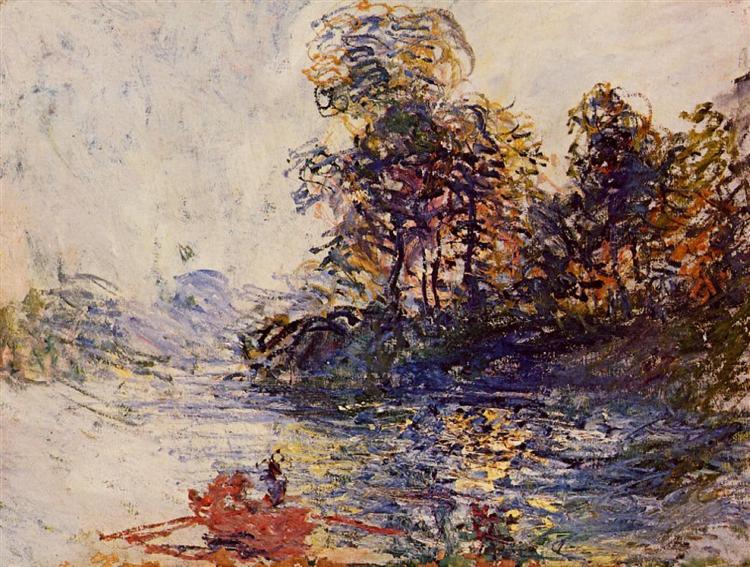Kuvaus
Claude Monet's The River (1881) is an exquisite example of the mastery of Impressionism, a movement that the French artist helped define. Capturing a river scene at a specific time of day, this painting stands out not only for its depiction of nature, but also for its exploration of light and color, hallmarks of Monet's work.
At first glance, the work presents itself as a landscape dominated by the fluidity of water, which appears to move gently under the sunlight. Monet uses a colour palette that evolves between soft and luminous tones, predominantly green and blue, evoking the serenity of a natural environment. The way in which the colours overlap and intertwine creates a sense of movement and transience, essential aspects within the Impressionist discourse. The reflections in the water, captured with loose and rapid brushstrokes, create an almost dreamlike effect that invites the viewer to immerse themselves in the scene.
The composition of The River is central to understanding Monet's approach to nature. At the bottom of the painting, the banks of the river are vibrantly depicted, with vegetation peeking out spontaneously. This compositional choice focuses attention on the relationship between water and its surroundings, reminding the viewer of the constant interplay of light and nature. No human figures or characters are featured within the work, reaffirming Monet's desire to capture the essence of the landscape as he perceived it, without the interference of human activity.
The use of light in this painting is equally notable. Monet is deeply interested in how light transforms colours and shapes at different times of day and in different atmospheric conditions. In "The River", the sun seems to filter through the branches, creating sparkles on the surface of the water that break the calm of the surroundings. This play of light and shadow is reminiscent of Monet's other works, such as his "Water Lilies" series, where the exploration of light is also central.
It is interesting to note that the work was painted during a period when Monet was focusing on capturing landscapes outdoors, an approach that allowed him to study the nuances of color and light in their natural state. This method of painting, known as “plein air,” became a fundamental tool for the Impressionist artists, who sought to break with the conventions of academic art and represent the immediacy of visual experiences.
In short, The River stands as a testament to Monet's ability to transform a simple natural moment into a vibrant and emotional composition. The work not only highlights his technical mastery in the representation of light and color, but is also a reflection on the relationship between man and nature. This painting, along with his vast oeuvre, invites viewers to see the world through the lens of subjective perception, a legacy that has endured and continues to influence contemporary art.
KUADROS ©, a famous painting on your wall.
Hand-made oil painting reproductions, with the quality of professional artists and the distinctive seal of KUADROS ©.
Painting reproduction service with satisfaction guarantee. If you are not completely satisfied with the replica of your painting, we will refund 100% of your money.

